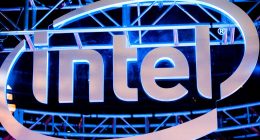On Tuesday, Apple will report its quarterly earnings for the three-month quarter ended March 2017. This will be of significance to the investors and analysts because Cupertino will announce that its stockpile of surplus cash has crossed $250 billion — this is more than a quarter of a trillion dollars. This figure is unmatched any other company, not even its arch-enemies Google and Microsoft.
This calculated guess has initially been reported by the Wall Street Journal. While the official number hasn’t been outed as of now but it is safe to believe that the cash reserves will most likely lie around the reported figure. This is because Apple reported cash reserve of $246.09 as of the quarter ended back in December. Apple currently has over 5.3 billion shares outstanding and the huge cash reserve will make the price $50 per share as compared to its around $144 stock price.
The tech giant has since witnessed staggering growth, not only due to the continued sale of its MacBook Pro with Touch Bar but also due to the introduction of a Product[RED] iPhone 7 and 7 Plus released earlier this year. This was the first time Cupertino released a red colored flagship smartphone, thus it was picked up and sold like hot cakes fresh out of the oven. Talking about the growth rate at which Apple made money this quarter, the report mentions:
Apple’s quarterly results will show the company has doubled its cash pile in just over 4 1/2 years. In the last three months of 2016, it racked up new cash at a rate of about $3.6 million an hour.
The massive amount of cash reserves aren’t particularly stored in the United States but instead, most of their capital is stockpiled in foreign nations. This practice was debuted by late Apple co-founder Steve Jobs and helps the company store away most of their cash in offshore countries to save themselves from paying taxes on overseas profit in the United States. It is followed by most tech giants.
And now, Cupertino is currently waiting on recently appointed President Donald Trump to make good on his campaign promises to slash business taxes to enable U.S-based tech giants to bring their capital back into the country. There’s also a possibility of a one-time tax holiday on surplus cash brought back home.
But with the increase in surplus capital, the Cupertino giant will soon be required to shell out some of it, either through acquisitions (like some AI or AR/VR startups) or returning some of the cash back to its shareholders. The analysts have been speculating that it could easily buy out companies like on-demand video streaming giant Netflix, electric automaker Tesla or even Disney.
This decision is expected to become important in the coming months as Apple doesn’t have expenses as huge as its reserves. The tech giant may spend a billion dollars on research and about $75 billion of the reserves will be offset by debt, which needs to paid off by the end of the September quarter. Rest of the debts do not mature until 2045, so Apple will have most of their cash reserves still in hand.
The most favorable option will definitely have to be paying a special dividend to the shareholders, a tactic adopted by Microsoft back in 2004. It announced $3 per share dividend for its shareholders, which helped reduce the cash reserves from more than $50 billion to just under $18 billion. Apple will resort to similar methods if President Trump increases pressure on homegrown tech giants.
The Tech Portal is published by Blue Box Media Private Limited. Our investors have no influence over our reporting. Read our full Ownership and Funding Disclosure →






